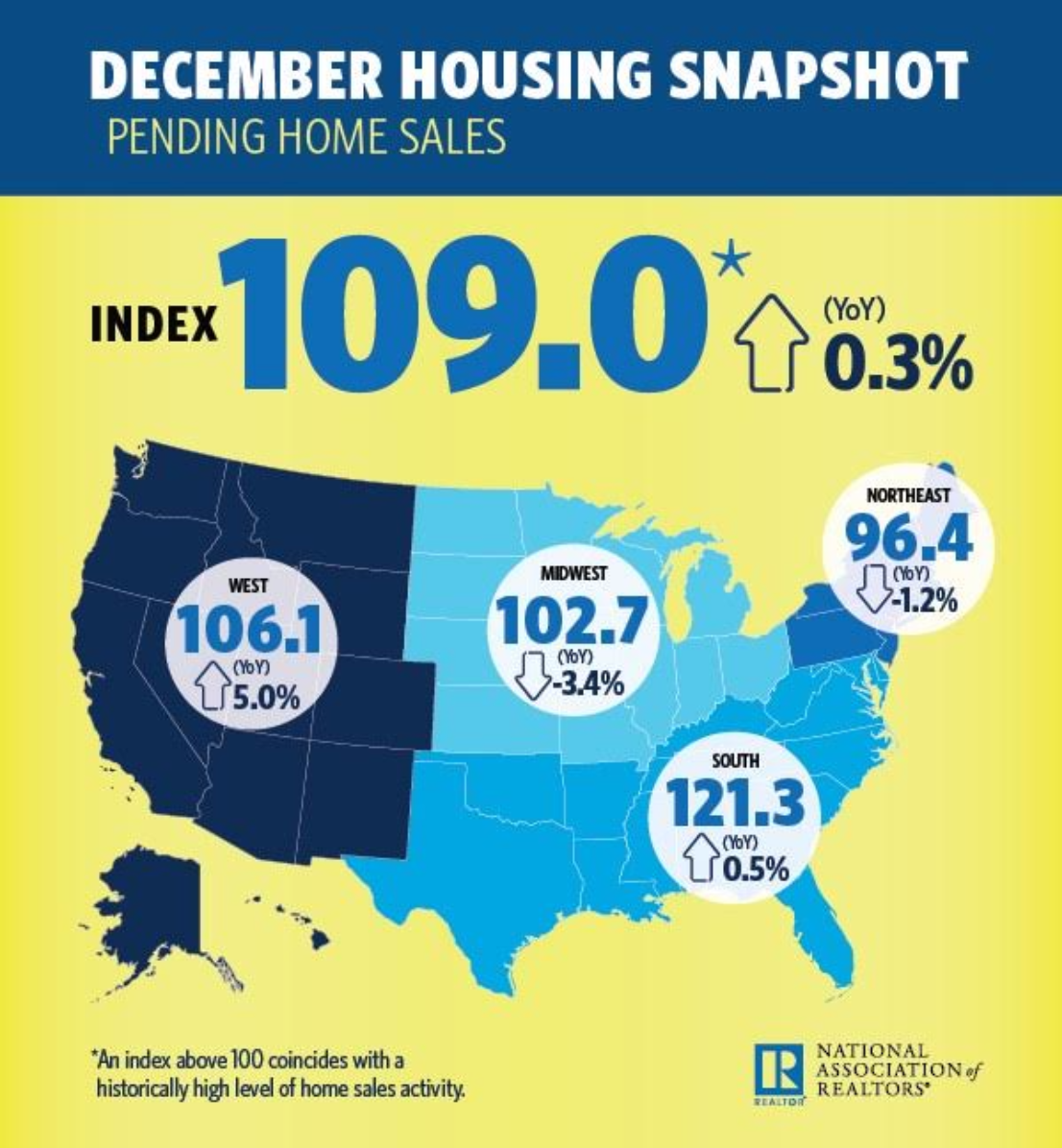Hopes are high for this year as 2016 closed out pending home sales on a high note, however low inventory continues to dampen the high spirits.
Pending home sales increased in December by 1.6% to 109, up from 107.3 in November, according to a new report from the National Association of Realtors. That is an increase of 0.3% from December 2015.
“Pending sales rebounded last month as enough buyers fended off rising mortgage rates and alarmingly low inventory levels to sign a contract,” NAR Chief Economist Lawrence Yun said.
“The main storyline in the early months of 2017 will be if supply can meaningfully increase to keep price growth at a moderate enough level for households to absorb higher borrowing costs,” Yun said. “Sales will struggle to build on last year’s strong pace if inventory conditions don’t improve.”
The supply that is available right now is concentrated in the upper end of the market, according to Yun. This is evident by looking at December data on the year-over-year change in single-family sales by price range. During the month, sales were up around 10% compared to December 2015 for homes sold at or above $250,000, while homes sold between $100,000 and $250,000 only increased 2.3%. However, sales of homes under $100,000 were down 11.6% compared to a year ago.
“The dismal number of listings in the affordable price range is squeezing prospective first-time buyers the most,” Yun said. “As a result, young households are missing out on the wealth gains most homeowners have accrued from the 41% cumulative rise in existing home prices since 2011.”
Existing home sales decreased in December, but closed out the year at the highest point since 2006.
The low inventory, however, may not be a problem for long. In fact, Yun expects housing starts will increase by 7.9% in 2017.
“Especially if construction-related regulations are relaxed, all eyes will be on the homebuilding industry this year to see if they can finally start making up lost ground on the severe housing shortages impacting much of the country,” he said.
Regionally, the Northeast and the Midwest saw annual declines of 1.2% to 96.4 and 3.4% to 102.7 respectively. However, the South and the West both increased by 0.5% to 121.3 and 5% to 106.1 respectively.
Click to Enlarge
(Source: NAR)


